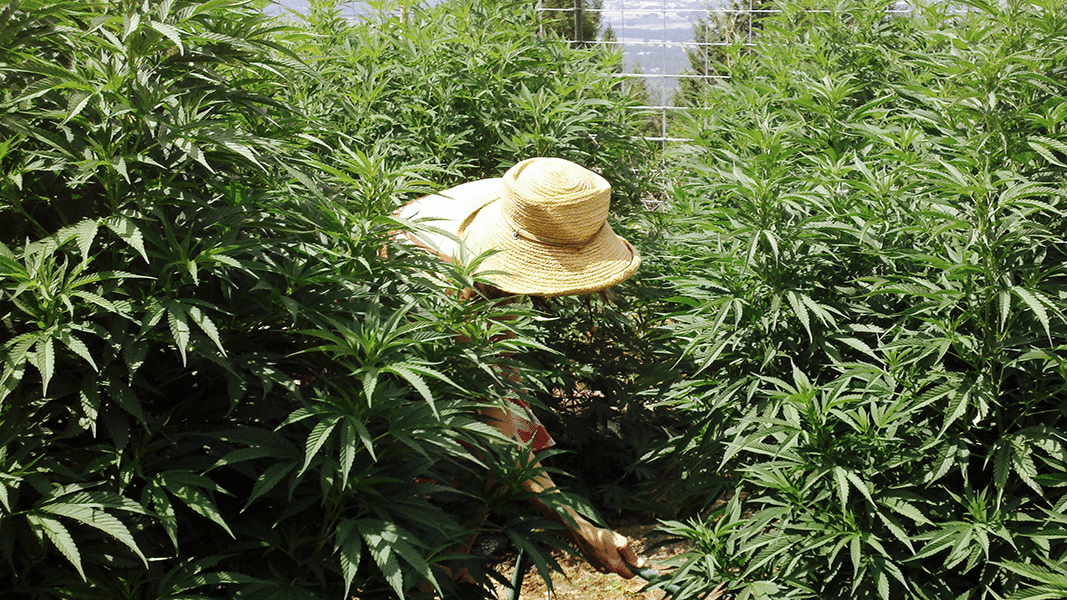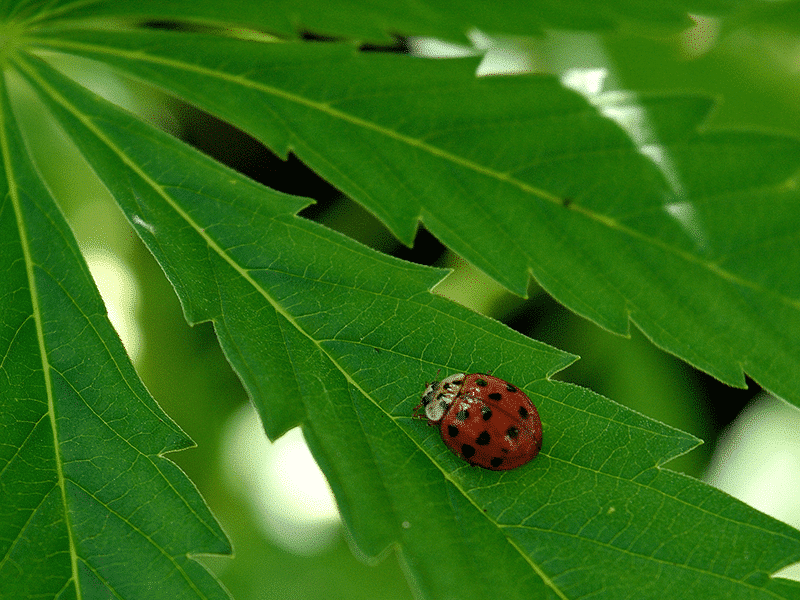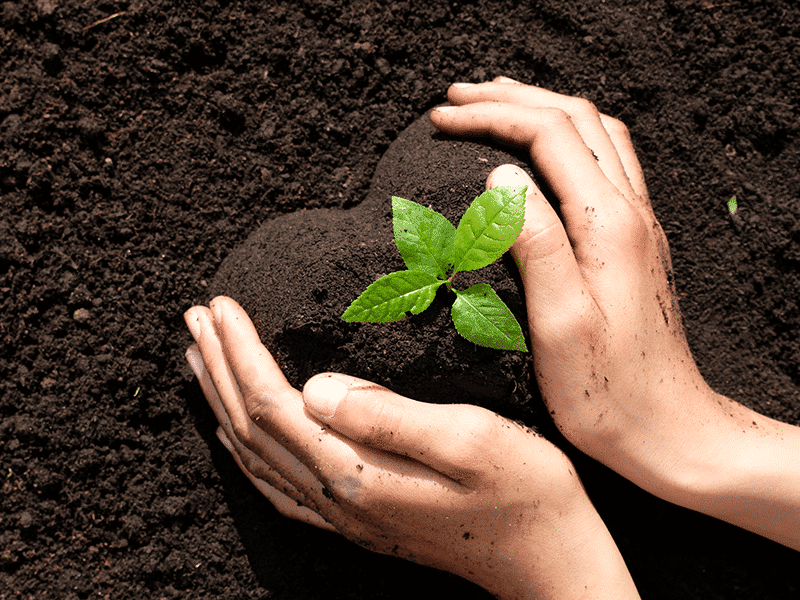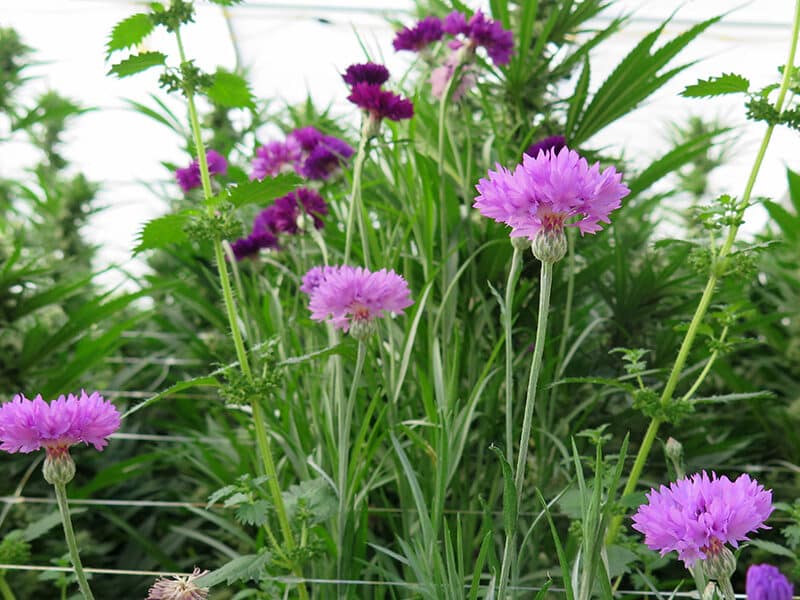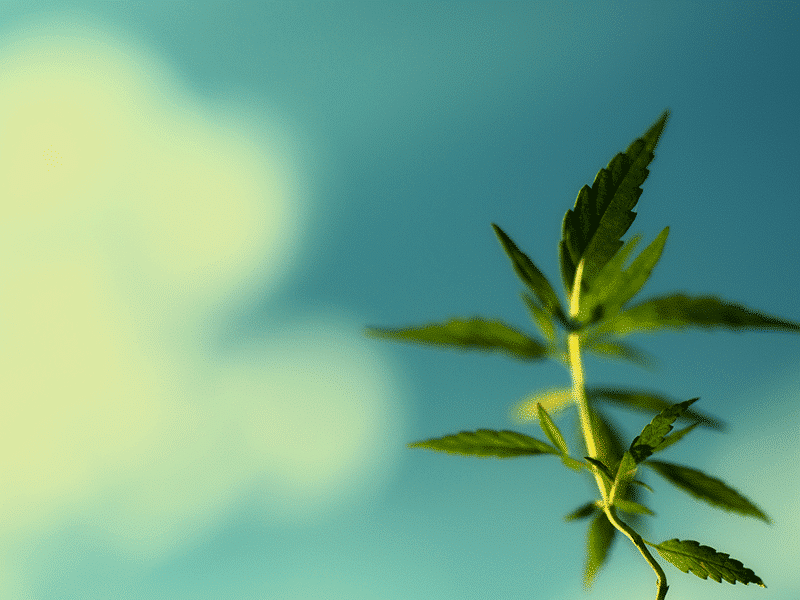A few years ago, I cultivated a CBD-rich medicinal cannabis garden in Sonoma County, California, on a parcel that was once part of an experimental farm owned and operated by the famed horticulturalist Luther Burbank. Known as a “plant wizard” and a creator of novel botanicals, Burbank purchased the property in 1885 to expand his plant-breeding work.
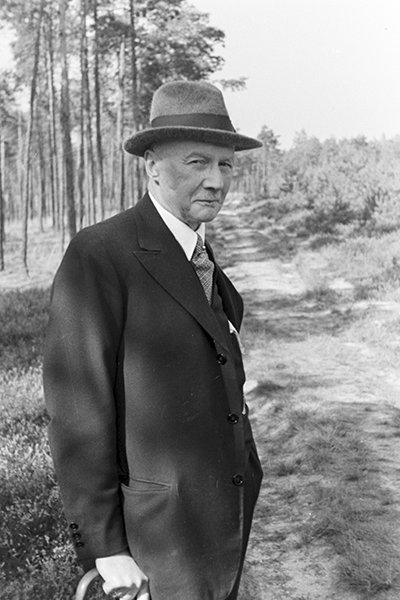
More than 130 years later, I became an unlikely beneficiary of Burbank’s wise decision to plant on this terrain. The land was blessed with a mild Mediterranean climate and well-drained, loamy soil — “the chosen spot of all this earth as far as Nature is concerned,” as Burbank described it — and perfect, it turns out, for growing ganja.
Burbank knew this firsthand. He was a big fan of cannabis sativa, breeding it and promoting its many uses. Yet, this aspect of Burbank’s legendary career as a pioneer horticulturist has largely been ignored by historians and is not well known. It should be. Many people have eaten Luther Burbank’s Russet Potato or his Bartlett Pear, but few know much about the man himself or his connection to cannabis.
Burbank’s life spanned America’s first golden age of medicinal cannabis. When he was in his prime, cannabis was listed in The U.S. Pharmacopeia and The National Formulary as a remedy for numerous ailments. From the mid-1800’s until the late 1930’s cannabis tinctures and poultices were popular over-the-counter remedies for treating pain, headaches, anxiety, insomnia, colds and flu, seizures, and lack of sexual desire, to name just a few indications. Apothecaries sold cannabis cigarettes for asthma, and “hasheesh” candies were retailed by the likes of Sears, Roebuck and Company.
Burbank was particularly interested in the industrial applications of cannabis. He developed a cultivar for superior fiber content, envisioning it as an alternative to the dwindling supply of wood pulp for paper. “The experimental work is only at its beginnings, but it seems to be of considerable promise,” Burbank wrote. He also encouraged the use of hempseed oil for a variety of products, noting its widespread applications in other countries, while bemoaning the waste of agricultural resources he had observed in the United States.
Apples & Ganja
My cannabis garden was set amongst some of Burbank’s still-producing apple trees, with south-facing terraces that made full use of the sun. It also benefited from the afternoon sea breezes, which modulated and circulated the warmed summer air, a natural convection action that also helped to stave off mold infestation so devastating to ripening marijuana plants.
The growing season would begin in the early spring. As the buds on Burbank’s centenarian apple trees were swelling nearby, I’d clean and organize the greenhouse, root clones, germinate seeds. When the apples were in full flower, it was time for me to turn and replenish the soil.
In early June, I planted my foot-high cannabis starts, and for the next several months I would nurture them as they grew into humungous powerhouses bursting with potent, resin-heavy flowers. I cultivated cannabis as if I was caring for my own body. I emphasized the building of robust health as the best strategy to help my plants fend off pests and disease and reach their full potential.
I pinched and “super-cropped” them to encourage branching. I fed them side-dressings of compost and misted them with home-brewed “tea” rich with micronutrients and beneficial bacteria. I released thousands of ladybugs and praying mantises into the garden to beat back insect invaders. And I played music in between the rows while I worked — Mississippi Delta blues, Afro-Cuban rhythms, and favorite indie bands like Built to Spill and Califone.
The landowner of the property was a friend, affectionally nicknamed “The Naked Jew” for his nocturnal tromps out to the garden in nothing but a pair of rubber boots (an occurrence triggered by a sudden bump-in-the-night that had him imagining a pack of errant teenagers sneaking into my ganja grove to score some fresh schwag). On breezy late afternoons, he would wander over to “the field” as he called it, modestly clad in a sarong, to see how “the girls” were doing and bring me a cold mug of kombucha. We’d chat about our children and the current state of the apples, the world, and the weed. The ever-changing garden was our meeting place, the plants our silent witnesses.
Wonder, Beauty & Delight
My days were long and physically exhausting, but I never tired of the labor. Working in my cannabis garden refilled me in countless ways and taught me lessons that I still carry with me. “Nature is the most logical school of learning,” Burbank once wrote. “The truth is that life is not material and that the life-stream is not a substance. Life is a force — electrical, magnetic, a quality, not a quantity; and if we start there we can understand a lot of things about man and his works and orders and processes.”
A lithe, boyish man with placid blue eyes, Burbank was known for his rumpled yet elegant sartorialism, due to his habit of wearing a suit, hat and gloves to work in the garden. This made him “more picturesque than ordinary” with an “indubitable air of gallantry and personableness,” according to his friend and biographer William Hall.
“Merry, humorous, whimsical, loving life and loving laughter, he radiated a personality that drew him toward everyone he encountered,” Hall wrote in the long out-of-print biography, Harvest of the Years. Burbank’s belief that “life overflowed with wonder, beauty and delight” reflected his curiosity about science and the natural world. He held little interest in religious dogma or ideas of Heaven and Hell. Instead, Burbank felt that “good work well done, sincere motives, and loyalty to high ideals formed the whole duty of man; to these Burbank added, for the creation of heaven on earth, the single essential, Love,” Hall recounts.
Near summer’s end, my cannabis flowers would start to thicken just as Burbank’s apples were filling out. After a day’s work, I’d often take a walk, passing by the senior housing complex next door, also on land formerly part of Burbank’s farm. I’d see the residents gathered in their community garden — planting, watering, weeding or just resting on benches, enjoying the greenery.
A bit further on I would arrive at Burbank’s old caretaker cottage and the beds filled with his amazing cultivars. I had long admired his inventions: his sweet-tart Santa Rosa Plum, Spineless Cactus, and the White Blackberry, bred to keep ladies’ gloves from staining. My favorites of his floral hybrids are the variations on his Shasta Daisy. Like white-haired ladies, each wore a different hairstyle: some petals curled, others tidy, another a wild and exuberant mane. “Flowers,” Burbank once wrote, “always make people better, happier, and more helpful; they are sunshine, food and medicine to the mind.”
The Last Harvest
My cannabis flowers would be close to harvest by late September, and putting on an extravagant show, their beauty a heady mix of mystery and hidden potential. The ripening colas were so dense and heavy they needed constant tying and staking; their provocative fragrance floated on the breeze all the way down the road. When you spend so many hours doing a certain kind of work, it can infuse your dreams, and mine were populated with mischievous green witches and voluptuous Viking queens wearing crowns of serrated leaves.
Burbank considered humans and plants as “part of the same onward-moving procession, each helping the other to do better things.” In Burbank’s mind, we were meant not only to cultivate plants, but to form actual relationships with them. Those of us who’ve spent a significant amount of time growing cannabis understand this intimately, as the work offers something uniquely its own. Being a “grower” is an act of affirmation, a yes to the mystery and exploration of the body, mind and beyond, with cannabis as our willing ally.
By mid-October, the harvest would be under way. Before sunrise I’d be out in the garden, cutting branches laden with sticky clusters of ripe buds. The apples would be ripe as well, and I’d fill baskets of them for the trimmers to munch on. I was fortunate to hire a crew of Tibetans to manicure my weed, which they did with unshakable calmness, chanting Buddhist sutras as they worked to trim, dry, and cure the flowers. Once a week they’d make homemade momos — a type of Tibetan dumpling served with a tongue-lashing chili sauce — and I’d pitch in, practicing the thumb twist they taught me to seal the edges of this delicacy.
My final, deeply satisfying task of the season was to deliver my CBD-rich medicine to state-licensed medical cannabis dispensaries in California, where patients with conditions ranging from multiple sclerosis to cancer to neuropathic pain would gratefully purchase amounts to treat themselves.
This was the last time I would grow cannabis alongside Burbank’s apple trees. On January 1, 2017, cannabis became legal for adult use in California. But under the new zoning regulations, the rural residential parcel where I had cultivated my crop was now off-limits for growing more than six plants for personal use. I was forced to close down my medicinal garden, which I did with a heavy heart. (Sadly, many other skilled cannabis cultivators and small-is-beautiful farmers in Sonoma County were also regulated out of existence.) It was the end of an era, and I would miss it.
A Radical Freethinker
Who knows what Luther Burbank would have thought about the current cannabis revolution, the commercially driven green rush, the resurgence of interest in the plant’s medical uses? He died not long before cannabis was maligned by reefer madness and the “devil’s weed” became the mascot for eight decades of federal prohibition.
A radical free thinker, Burbank was interested in “the wonders of the mind of man and the subjects that we now consider mystical.” He counted among his friends Paramahansa Yogananda, the Hindu spiritual teacher, who called Burbank “an American saint.” In his book Autobiography of a Yogi, Yogananda describes how Burbank once told him he “sometimes felt close to the Infinite Power,” and often talked to his plants “to create a vibration of love.”
Burbank’s final year was overshadowed by the 1925 Scopes Monkey Trial in which high school teacher John Scopes was found guilty of heresy by the State of Tennessee, for the crime of teaching Darwin’s Theory of Evolution. Burbank was appalled. “I am an infidel,” he asserted. “A doubter, a questioner, a skeptic. The scientist is a lover of truth for the very love of truth itself, wherever it may lead.” In his memorable address in a San Francisco church, Burbank argued for “righteous behaviour and the highest spiritual development,” while expressing his “utter disbelief in the mockery of dogma.”
Burbank’s outspoken views stood out at a time when religious fundamentalism and xenophobia were on the upswing. His radical honesty triggered a global backlash steeped in ignorance and bigotry. Once loved the world over, Burbank had become a pariah. Undaunted, he strove to answer the thousands of hateful letters he received, responding to each with reason and compassion. But it was too much. Those close to him believed that the heavy stress and heartbreak led to his illness and ultimately to his death from a stomach virus. Burbank, age 77, died at home in Santa Rosa on April 11, 1926. He was buried in an unmarked grave under a Cedar of Lebanon tree he had planted near his greenhouse.
And yet, nearly a century after his death, Burbank’s words are still as fresh and novel as a new peach cultivar, as relevant a balm to the current burdens of modern society as they were on the day he wrote them: “What is civilization?” he asked. “What is idealism? Which way does our future lie?” If we look at textbooks or history for the answers, he argued, we will be baffled, “but if we go to Nature and inquire into her processes we discern more than a glimmer of light.”
“In every man,” Burbank maintained, “no matter how ignorant or how hurried or how driven or how successful in other lines, there is a dormant love of Nature and natural things; it would take very little of the time you crowd so full of everything else for you to breathe some of the incense of gardens, to feast your eyes on the calm and changeless beauty of the hills, to rest your bodies on the quiet beauty of the earth, and to heal your souls in the perfect serenity of some unbroken wilderness.”
Melinda Misuraca is a Project CBD contributing writer with a past life as an old-school cannabis farmer specializing in CBD-rich cultivars. © Copyright, Project CBD. May not be reprinted without permission.
Sources:
- Burbank, Luther and Hall, William. The Harvest of the Years. Houghton Mifflin Company, 1927.
- Luther Burbank on cannabis/hemp breeding: https://www.hempbasics.com/hhusb/hh4bot.htm (reference #29, from an article in the Annals of the New York Academy of Sciences).
Recommended Readings
The Many Gifts of Cultivating Cannabis
Cultivating a CBD-rich cannabis garden is a form of “nature therapy.”
Healthy Soil, Healthy Gut, Healthy Brain
Project CBD interviews Kelly Dunn and Josh Sarvis about sustainable and regenerative growing practices.
Marijuana Not Monoculture!
Companion planting offers many benefits for marijuana growers.
A Victory Garden for Healing
Growing cannabis is a form of therapy. Here are some resources for starting your own cannabis garden.

